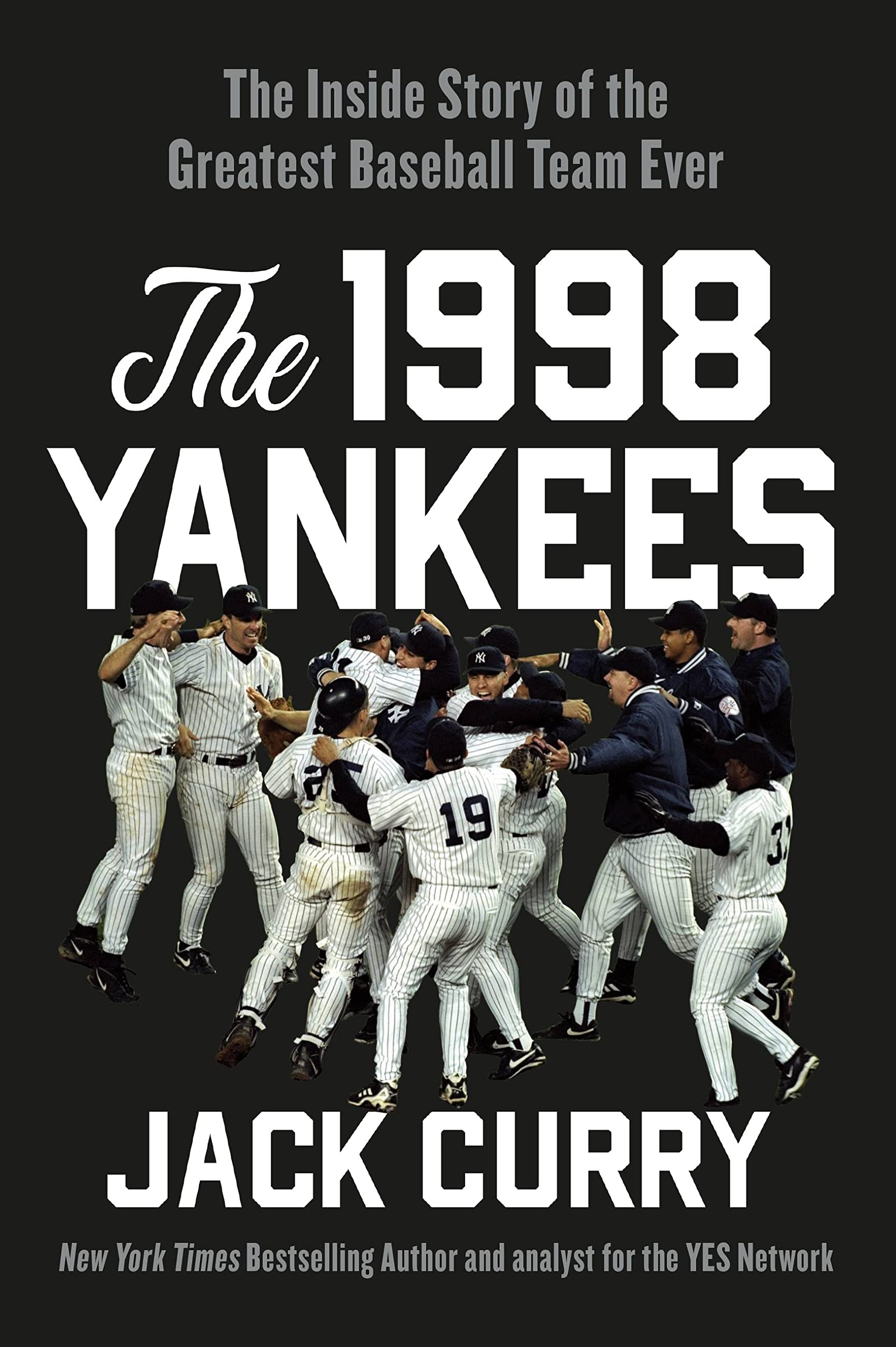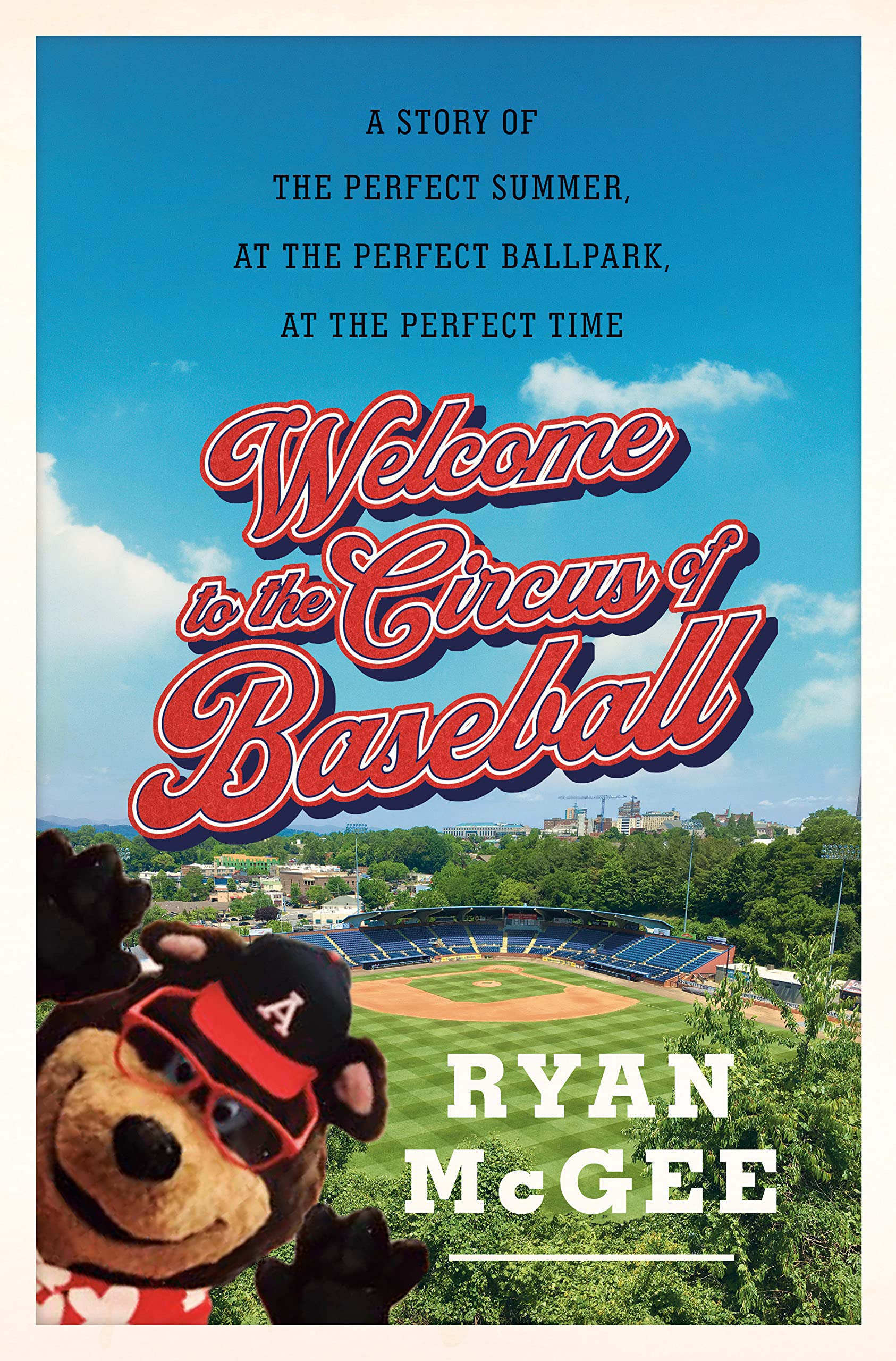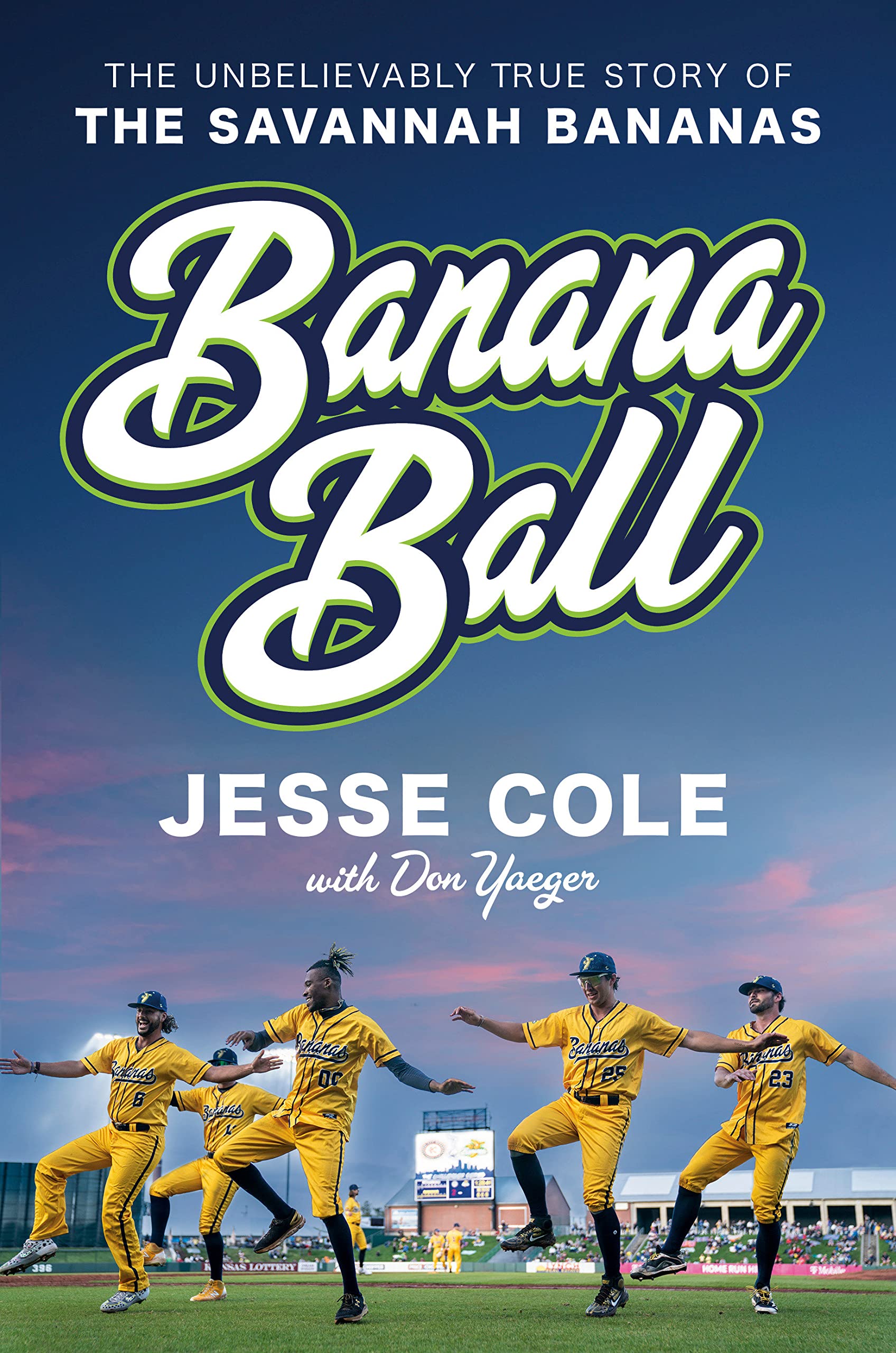2023 Summer Baseball Titles: Tradition and the Bucking Thereof
Baseball Books
2023 Summer Baseball Titles: Tradition and the Bucking Thereof

In their excellent 2006 release, THE BASEBALL UNCYCLOPEDIA: A Highly Opinionated, Myth-Busting Guide to the Great American Game, co-authors Michael Kun and Howard Bloom write:
If you happen to pick this book up in your local bookstore…. Peek over the top of the book and look at the other baseball books on the shelves. Putting aside all the fantasy baseball and statistic-based books, what do you see?
Books about the Yankees.
Books about the Red Sox.
Books about the Yankees and the Red Sox.
Books about players who played for the Yankees...
You get the idea. So it should be no surprise that, once again, many of the new offerings this summer lean a bit Yankee-centric.
 The older you get, the more recent events become “history.” Take THE 1998 YANKEES: The Inside Story of the Greatest Baseball Team Ever by Jack Curry. It’s hard to believe that was 25 years ago! Some of the players are now members of AARP. Now that’s depressing.
The older you get, the more recent events become “history.” Take THE 1998 YANKEES: The Inside Story of the Greatest Baseball Team Ever by Jack Curry. It’s hard to believe that was 25 years ago! Some of the players are now members of AARP. Now that’s depressing.
Curry, who collaborated on memoirs with David Cone, Paul O’Neill and Derek Jeter --- three key contributors to that squad --- does a masterful job recreating the excitement of that year, which is not necessarily an easy task for such a dominant group.
There’s no doubting that it was a fun year, full of colorful characters --- like the Cuban defector Orlando “El Duque” Hernández and a very young Jeter, as well as reclamation projects like former Met Darryl Strawberry. Curry does a deep dive into the backstories of the regulars but recognizes that it takes more than a handful of superstars to make the engine run. So he does his best to include the supernumeraries who stepped up and made valuable contributions in their own right.
People who read my blog know my feelings on the use of superlatives in book titles, but in this case, Curry just might be right. One bone of contention, though: some fans and members of the media have made a habit of referring to the Yankees’ win total of 125 as the best in history. That’s only true because they include the postseason victories, which no other team does. In fact, the Yankees actually had a record of 114-48, two fewer wins than the 1906 Chicago Cubs (who played seven fewer games; the Seattle Mariners matched the Cubs’ total in 2001).
 Marty Appel, who served as PR director for the Bronx Bombers in the early 1970s and executive director of the team’s broadcasts on WPIX, takes a much longer look back in PINSTRIPES BY THE TALE: Half a Century In and Around Yankees Baseball.
Marty Appel, who served as PR director for the Bronx Bombers in the early 1970s and executive director of the team’s broadcasts on WPIX, takes a much longer look back in PINSTRIPES BY THE TALE: Half a Century In and Around Yankees Baseball.
Appel --- with more than 25 books in his oeuvre, written both on his own and with others --- began his career as a plucky teenager, hired to answer Mickey Mantle’s fan mail. Through ambition and perseverance, he attained a role that was both coveted (who wouldn’t want to work for the Yankees?) and questionable (who would want to work for George Steinbrenner?) How hard must it have been to deal with the mercurial owner, who went through managers, coaches and even secretaries like tissues?
PINSTRIPES BY THE TALE, however, is about more than just the Yankees. Appel served in PR and consulting capacities for numerous projects, including the 1996 Olympics, the short-lived Israel Baseball League, and the New York Franchise for the World Tennis League. He discusses all of these in an admittedly non-linear manner. Through it all, he has managed to stay a mensch. Given human nature, it would have been easy, if not almost expected, to deliver this as a tell-all. Just look at what former Yankee Jim Bouton started with his publication of BALL FOUR some 50 years ago. But Appel doesn’t go that route. He’s more of a PG-13 kind of guy. There are plenty of interesting and funny things to relay than who did what drugs or who ran around with whom (although he was there for the infamous family-swapping saga of Fritz Peterson and Mike Kekich).
Not everything was sunshine and roses for the Yankees. They hit a dry spell once in a while. Of course, for their fans, a dry spell meant not winning the World Series.
 Chris Donnelly examines one of the low periods, shared with their crosstown rival Mets (who were kind of used to poor seasons, despite the occasional surprises), in ROAD TO NOWHERE: The Early 1990s Collapse and Rebuild of New York City Baseball.
Chris Donnelly examines one of the low periods, shared with their crosstown rival Mets (who were kind of used to poor seasons, despite the occasional surprises), in ROAD TO NOWHERE: The Early 1990s Collapse and Rebuild of New York City Baseball.
Let’s face it: New Yorkers demand the best --- be it in their food, entertainment or sports. But from 1988 to 1992, the Yankees finished fourth or worse in the seven-team American League East six times, including last place in 1990. The Mets suffered similar results, so it was a matter of which team could not suck as much as the other. The Yankees, though, had the added yoke of playing under the very demanding Steinbrenner, who just could not stand to see the Mets enjoy “better” headlines.
Donnelly does an admirable (if that can be considered the right word) job of reporting on the disappointments and frustrations of everyone involved: front offices, managers, players and fans. For better or worse, Donnelly --- who previously compared the competing Big Apple franchises in DOC, DONNIE, THE KID, AND BILLY BRAWL: How the 1985 Mets and Yankees Fought for New York’s Baseball Soul --- reminds readers of dozens of non-household players who populated the rosters and had a hand in the teams’ fates.
I distinctly remember being on vacation with my wife following the 1991 season when the Mets acquired such major stars as Bobby Bonilla, Eddie Murray and Bret Saberhagen. We were on our way out of the desert and into the promised land. But instead of the high hopes put forward by baseball pundits, the Mets actually lost five more games than the year before and became, as per the title of the 1993 book by journalists John Harper and Bob Klapisch, THE WORST TEAM MONEY COULD BUY.
The Yankees would bounce back to their dynastic ways. Thanks to a corps of homegrown players like Jeter, Jorge Posada, Mariano Rivera and Andy Pettitte, they won four World Series titles between 1996 and 2000. The Mets woes, however, would last a few years longer. And the enmity between the two camps continues to this day.
Taking a break from the New York baseball scene, we have a couple of books that deal with various alternatives to major league baseball.
 The more traditional of the two is WELCOME TO THE CIRCUS OF BASEBALL: A Study of the Perfect Summer at the Perfect Ballpark at the Perfect Time by Ryan McGee. (There go those superlatives again).
The more traditional of the two is WELCOME TO THE CIRCUS OF BASEBALL: A Study of the Perfect Summer at the Perfect Ballpark at the Perfect Time by Ryan McGee. (There go those superlatives again).
About that title: The “summer” might be referring to the author’s life at the point (1994) when he was just out of college, working as a paid intern in the sport he loves but relatively free from care. The “ballpark” was historic McCormick Field, steeped in history, where the likes of Babe Ruth, Lou Gehrig and Ty Cobb played almost a century ago, and thus perhaps is the perfect setting for this memoir. And the “time” could be the benefit the minors received as the major league was about to shut down over labor issues, leaving the bushes the only place to find pro ball.
I doubt there was much effort to disguise the similarity in the title to Ron Shelton’s THE CHURCH OF BASEBALL, which looked at the making of Bull Durham, unfailingly recognized as one of the best movies about the sport. Both are about life in the low minor leagues, where the players --- many in or barely out of their teens --- might never have been away from home before (especially true of the Hispanic athletes who had the additional burden of the language barrier).
McGee, a senior writer for ESPN, goes into his humble beginnings, learning the ropes as an intern for the Ashville Tourists, then becoming an affiliate of the Colorado Rockies. And, indeed, many of the tales he tells about the crazy promotions and absurd mascots (you name it) are quite reminiscent of what you saw in Bull Durham. There’s the unpredictable play on the field, the behind-the-scenes colorful characters, the constant attempt to get fannies in the seats through the use of promotions (dollar beer night, anyone?), etc. Max Patkin, the “Clown Prince of Baseball,” even shows up here.
 Falling a rung below the minors is whatever you consider Jesse Cole’s entertaining enterprise. BANANA BALL: The Unbelievably True Story of the Savannah Bananas, written with Don Yaeger, is a combination business/self-help/philosophical treatise of a bizarro version of the national pastime.
Falling a rung below the minors is whatever you consider Jesse Cole’s entertaining enterprise. BANANA BALL: The Unbelievably True Story of the Savannah Bananas, written with Don Yaeger, is a combination business/self-help/philosophical treatise of a bizarro version of the national pastime.
Many have long complained that baseball is boring, that it takes too long, that there’s not enough action. That’s the main reason for this year’s rules changes. And it’s no secret that fans are offered many more leisure options than in the days of Ruth, Gehrig and Cobb. Cole believes that if you build something different and snappy, yet still keep some of the remnants of a game to which he once aspired as a pro ball player until injuries derailed those goals, “they will come.”
Cole’s mantra is “entertain first, everything else is secondary.” He reports glowingly about the stellar athletes whose love for the game demands they participate any way they can. That would explain the guy who plays on stilts. Or the one who throws a bunch of trick pitches. Or the one who… the permutations go on.
There are whacko rules that are meant to make the game more fan-friendly, like two-hour time limits and some formula for combining three innings’ worth of runs into points. It may be entertaining, but is it baseball? And does anyone who attend these exhibitions really care? Cole thinks the answer to both questions is yes, but for a traditionalist like me, I’m afraid not.
Despite naysayers, Cole has grown the Bananas into a successful business. Readers of a certain age might find comparisons to the Harlem Globetrotters. Indeed, he does devote several pages to that notion, although he downplays it. Like the Trotters’ Washington Generals, the Bananas have one opponent in on the joke who they pretty much play all the time.
--- Reviewed by Ron Kaplan (RonKaplansBaseballBookshelf.com)


